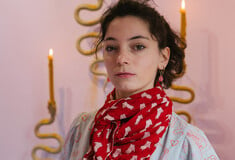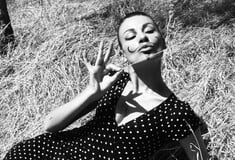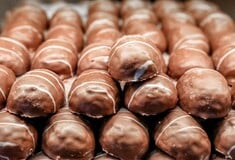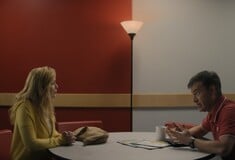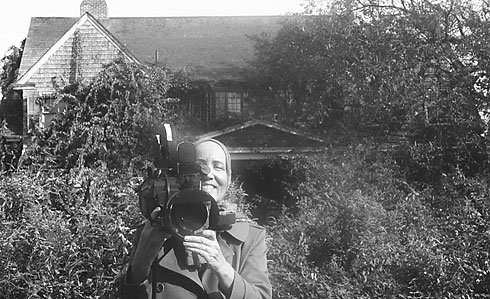
A Return to Grey Gardens
When autumn riptides break free and sculpt a deranged shoreline out of the beaches of East Hampton, I often recall one of my last conversations with Little Edie Beale. I imagine seeing her again, the prisoner of Grey Gardens, freed by the postseason to appear in her black net bathing suit, perhaps perform an antic little dance, then streak down from the dunes trailing a long silk scarf and plunge into the embrace of waves. I loved her spirit.
The musical Grey Gardens, which opens this week on Broadway, has triggered even more memories of when I first met the Beale ladies and went on to write the first story about them for this magazine, "The Secret of Grey Gardens." It was the summer of 1971. My family had rented a place across the street from what my then-7-year-old daughter called the Witch House. One Sunday, she found a litter of baby rabbits left in a box in our driveway and begged to take them over there, since it was already home to dozens of cats. This was how I described our visit at the time:
We ducked under the ropes of bittersweet hanging from a pair of twisted catalpa trees and skittered past a 1937 Cadillac brooding in the tangled grasses to find ourselves at the tippy porch steps of Grey Gardens. A hand-lettered sign hung from the door: Do Not Trespass, Police on the Place. Cats crouched all around in the overgrown grass, rattling in their throats, mean and wild. There was no turning back.
"Mother?"
We whirled at the sound of the tremulous voice. A middle-aged woman was coming through the catalpa trees, dressed for church but most oddly: a sweater wrapped around her head and her skirt on upside down. Her face was oddly young, as if suspended in time, faintly freckled and innocent, but painted with thick dark lipstick and heavy eyeliner. It struck me that she looked strangely familiar … like … like who?
"Are you looking for Mother, too?" she asked, more unnerved than we.
My little girl held out the box of bunnies.
"Did you think we care for animals here?" My daughter nodded solemnly. "You see! Children sense it." The woman clapped her hands in delight. "The old people don’t like us. They think I’m crazy. The Bouviers don’t like me at all, Mother says. But the children understand … "
My little girl said it must be fun to live in a house where you never have to clean up.
"Oh, Mother thinks it’s artistic this way, like a Frank Lloyd Wright house. Don’t you love the overgrown Louisiana Bayou look?"
My daughter asked if there really were police on the place.
"Not really, but there are boys who come over at night sometimes and try to club the cats to death." I suggested the boys might just be prankish.
"Oh no, they’re dangerous. I can tell what’s inside a person right away. Mother and I can see behind the masks; we’re artists, it’s the artist’s eye. Jackie has it, too."
"Jackie?"
"I’m Jacqueline Bouvier’s first cousin. Mother is her aunt. Did you know that?"
"No, we didn’t."
"Oh yes, we’re all descended from fourteenth-century French kings. Did you like the Kennedys?"
Now it clicked. The woman before me was a version of Jackie Kennedy coming back from church on a Greek island, but this was Little Edie in the summer of her 54th year.
"You … resemble your cousin," I stammered.
My daughter wanted to know if she knew President Kennedy well. "Jack never liked society girls, he only dated showgirls," she said. "I tried to show him I’d broken with society. I was a dancer. But Jack never gave me a tumble. Then I met Joe Jr. at a Princeton dance, and, oh my!" She swooned. "Joe was the most wonderful person in the world. There will never be another man like him … "
From then on, I was invited into the private world of the Beale ladies, two outcasts of a wealthy and famously dysfunctional branch of the Kennedy dynasty—the Bouvier-Beales—who were being hounded by county health officials threatening to evict them. When Little Edie led me through the decaying house that summer, it was a chilling version of Jackie’s famous White House tour. The wood floors of this once-proud mansion were lumped and crusty with old cat feces; the roof punctured with raccoon holes. Mother remained upstairs, summoning the services of her daughter by banging her cane on the floor and calling out in full operatic tremolo: "EeeDIE! Where is my champagne cocktail?"
Little Edie would then perform her secret act of subversion, spooning out cat food and shaping it into a proper mound, garnished with a twist of lemon. She winked at me. "Mother’s pâté."



